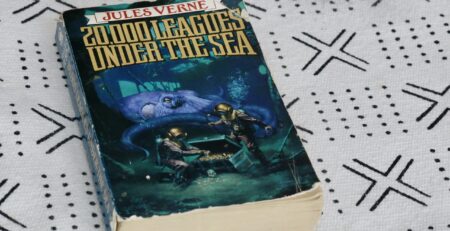For Soft Science Fiction That’s Fun to Read
I would categorize Axiom’s End as soft science fiction that’s fun and entertaining to read. I came across it while browsing Barnes and Nobles when I spotted a handwritten note from an employee under the plastic where the price tag normally is. Their recommendation drew my attention.
The Premise
It’s September of the year 2007. The first iteration of the iPhone was released only a few months ago, and a handful of disagreeable Wallstreet guys stand to make a fortune against the collapse of the housing bubble that hasn’t yet happened. In Axiom’s End, 2007 is also the year of First Contact with aliens.
Axiom’s End is an alternate history story. The first act begins with First Contact. We follow an unlucky Cora Sobino and family, who have the dubious honor of an alien intruder setting everything in motion. Cora’s family is fractured by her estranged father, an internet activitivist who is wanted by the US government for classified leaks related to previous alien encounters. “Truth is a human right,” is his mantra, but Nils Ortega is a spectre. Though he physically abandoned them years ago, his ghost haunts his family. He never seems to leave them in spirit. In the meantime, he leaks sensitive information on his website about aliens and government coverups from his secure location in Germany.
My Impression
Lindsay Ellis fills her prose with sensory detail that reads smooth and fast-paced. In the second act, she switches gears from the contemporary world to focus on her invented alien civilization and the intergalactic genetic purge. This gives us more backstory on Ampersand and the rest of the Fremda aliens. Ellis covers alien taxonomy and linguistics as she builds out their reason for landing on earth. It’s pretty creative, and very fun and soft-science fiction, indeed.
But it’s the last chapter that made the book for me. Axiom’s End is really about is connection and empathy. Cora and Ampersand end up in a place of deep affection and empathy for one another despite their fundamental differences. It poses many interesting philosophical questions on how we relate and the limits of human love, affection, and communication.











Leave a Reply